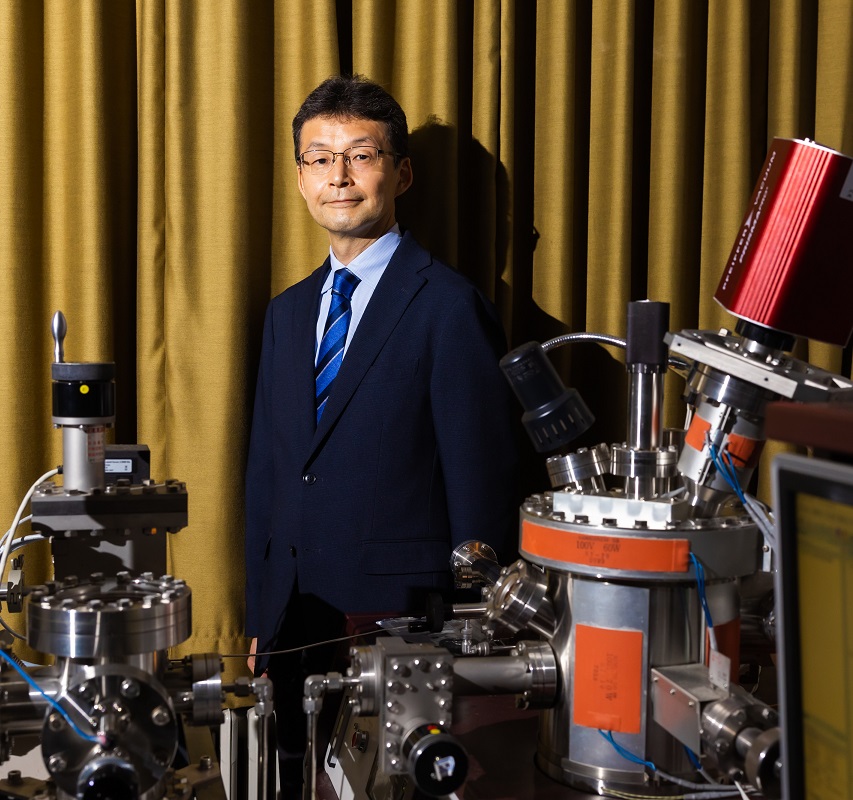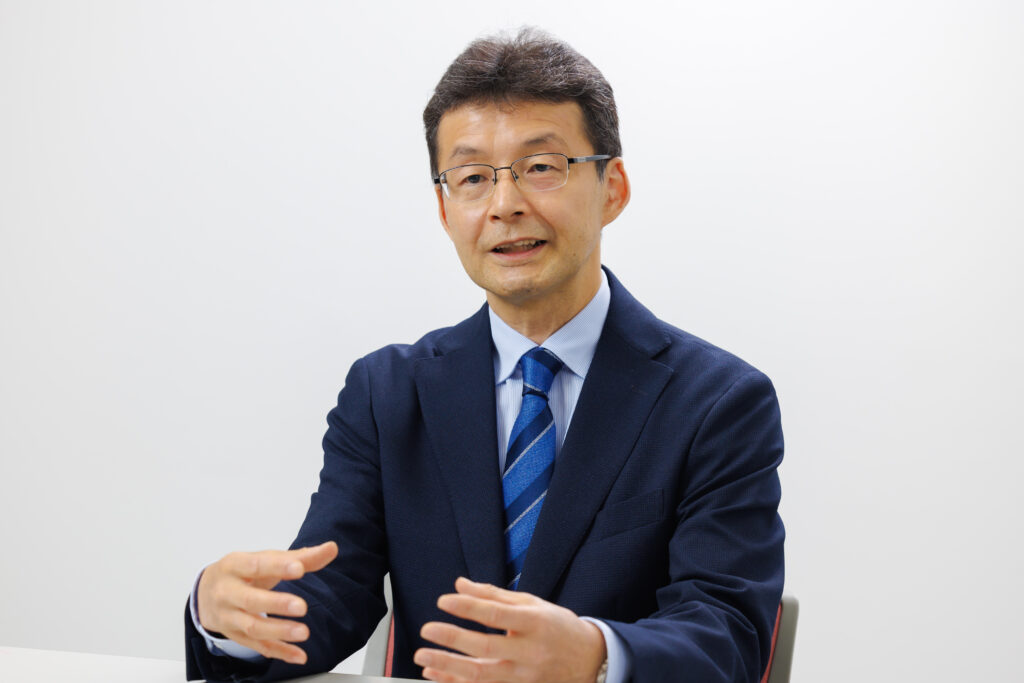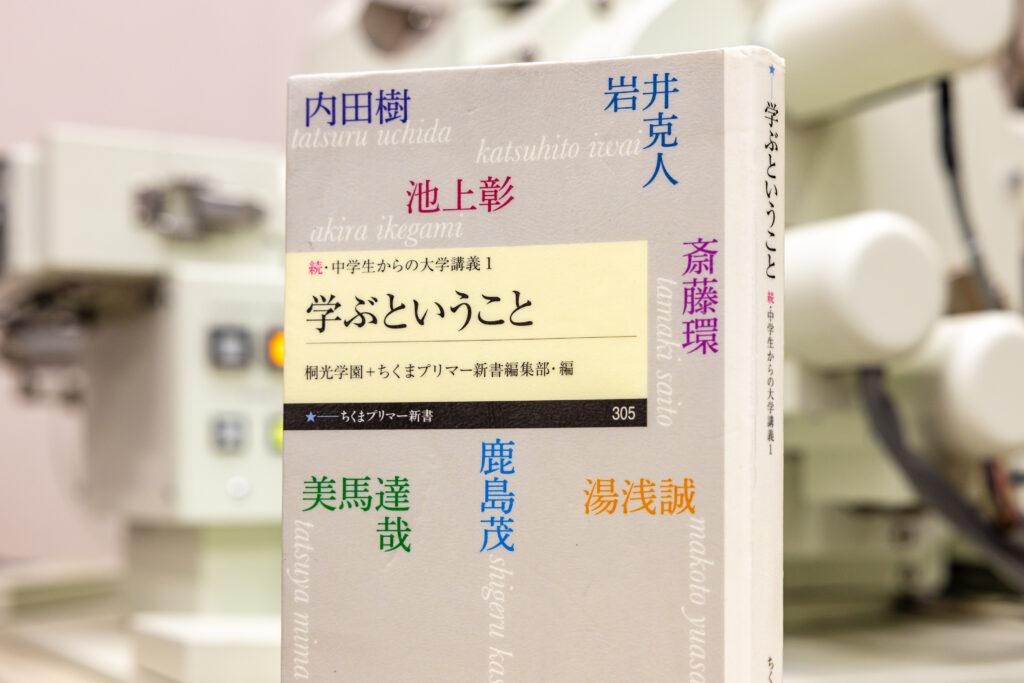
Faculty of Science and Technology Professor Kenichi Takai, who specializes in mechanical engineering, focuses on the development of new materials by studying the mechanism behind “hydrogen embrittlement” that weakens and damages metallic materials. What impact could his microscope-level research have on challenges present on a global scale?
Iron and steel account for more than 70% of the weight of automobiles. If these materials can be doubled in strength, weight could be halved without affecting safety levels, thereby significantly slashing fuel usage of gasoline-powered vehicles. Electric vehicles, fuel cell vehicles, hydrogen engine vehicles—regardless of underlying drive system, increasing the strength of materials to make them lighter in weight is the only way of reducing energy consumption.
Yet there is a higher risk of metallic materials fracturing as their strength increases. This is caused by “hydrogen embrittlement,” a field of research that I am focusing my efforts on.
Hydrogen here refers to hydrogen atoms, rather than molecular hydrogen. When water (H2O) in rain coats a metal and causes it to rust, the water gets broken down and only hydrogen atoms penetrate into the metallic structure. Over time, this builds up and leads to sudden fracture.
Even hydrogen stations essential for a hydrogen-based society have high-pressure hydrogen and metal in direct contact with one another. There is an inherent risk of fracture due to hydrogen embrittlement, so successfully tackling this challenge is essential for achieving a society based on hydrogen energy.
From clarifying the mechanisms to developing new materials

With an atomic number of 1 and the smallest element in our universe, hydrogen is able to penetrate the most minute gaps and act upon materials from the inside. We are still not exactly sure how high-strength steel suffers damage caused by a hydrogen-to-iron atom ratio of just 1:3000.
Taking fractured metallic material parts back to the laboratory to analyze and identify the cause is not always successful because by that time the hydrogen has disappeared. This is one reason why understanding the process of hydrogen embrittlement is so difficult.
I worked with students at my laboratory to develop the world’s only low-temperature thermal desorption spectrometry apparatus capable of detecting exactly where hydrogen is located throughout the metal atomic structure, how strong they are binding and in what quantities.
We use this apparatus to identify the positions of hydrogen in metal on an atomic scale and conduct tensile tests of metallic material—from this we can find which hydrogen atoms in the metallic lattice cause fractures, and conversely, which atoms are harmless.
Hydrogen leads to a drop in strength and ductility of metals, so identifying where they are located not only helps to understand the mechanism behind hydrogen embrittlement, but also contributes toward developing methods to prevent this. We hope to apply this knowledge throughout the field of material engineering as a way of contributing to the development of a carbon-free society.
Micro-scale research resolving global-scale challenges
The rewarding aspect of this field of research is that trying to understand processes occurring on a microscopic, atomic level can lead to addressing macro-level challenges on a global scale—like achieving a low-carbon society with lighter weight cars and even carbon neutrality with the use of hydrogen energy.
High-school students often ask me if researchers feel like they are living in a small bubble, spending all day in laboratories running mundane experiments. Surprisingly, however, I feel that my world view is expanding. If the results of our research become the topic of discussion at international conferences or in research papers, we are able to get in touch with more like-minded partners around the world who have common interests.
Research into hydrogen embrittlement is an interdisciplinary one being covered by specialists from numerous different fields. In fact, people from all around Japan are working to create industry-government-academia communities including the “Hydrogen Forum” with over 100 researchers and the “Steel Research Project” that conducts advanced research, supported by The Iron and Steel Institute of Japan.
Japan is one of the leading players in the field of hydrogen embrittlement—I want to continue with this research with the aim of further boosting our presence here.
The book I recommend
“Zoku – Chugakusei Kara no Daigaku Kogi 1 Manabu To Iu Koto (Cont. College Lectures by Junior High School Students 1)”
by Toko Gakuen + Chikumashobo, edited by Chikumashobo

Specialists in a range of fields write about challenges faced in life, social issues and the essence of studying in an easy-to-understand style from the perspective of junior-high and high school students. My son in high school usually ignores any book I recommend, but he couldn’t put this one down.
-
Kenichi Takai
- Professor
Department of Engineering and Applied Sciences
Faculty of Science and Technology
- Professor
-
Graduated from the Department of Materials Engineering, Faculty of Science and Engineering, Waseda University, and received his M.S. and Ph.D. in Engineering at the university’s Graduate School of Science and Engineering. Worked at NTT before holding a position of lecturer at the Department of Mechanical Engineering, Faculty of Science and Technology, Sophia University in 1999. Appointed assistant professor in 2002, and his current role in 2009.
- Department of Engineering and Applied Sciences
Interviewed: June 2022